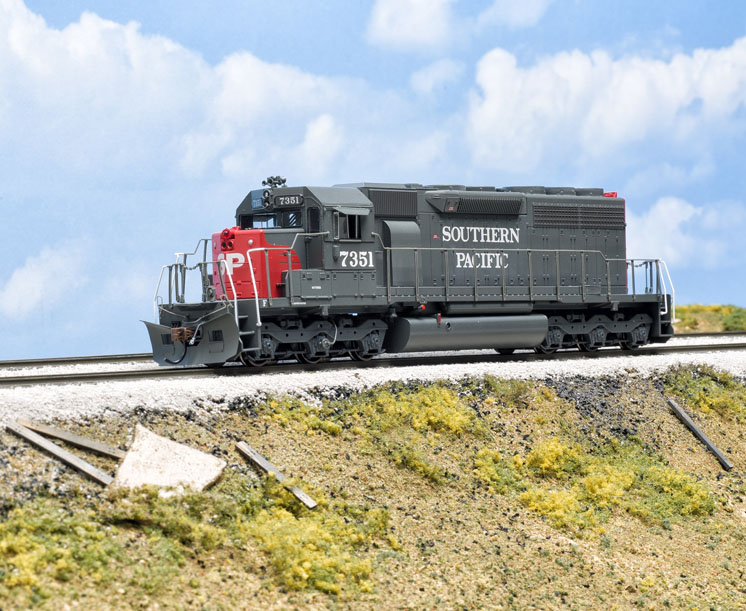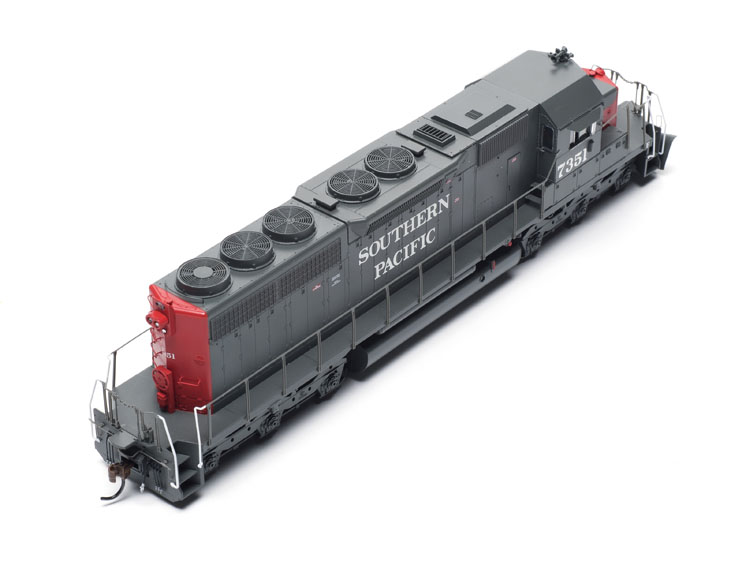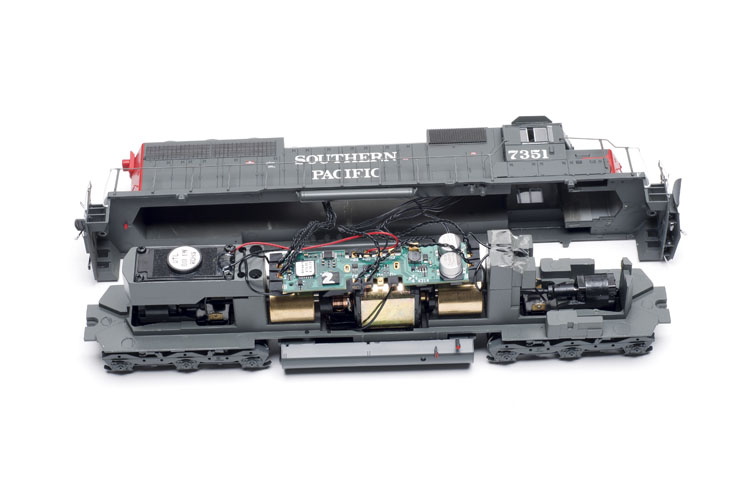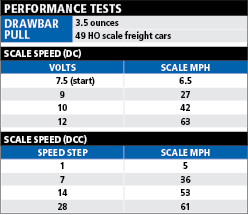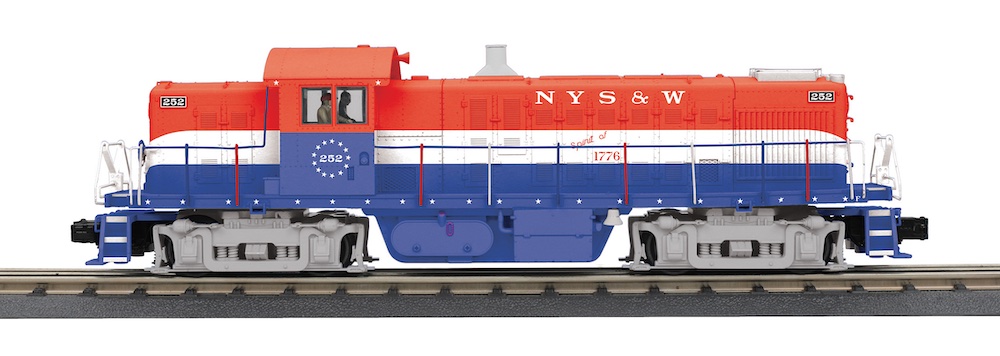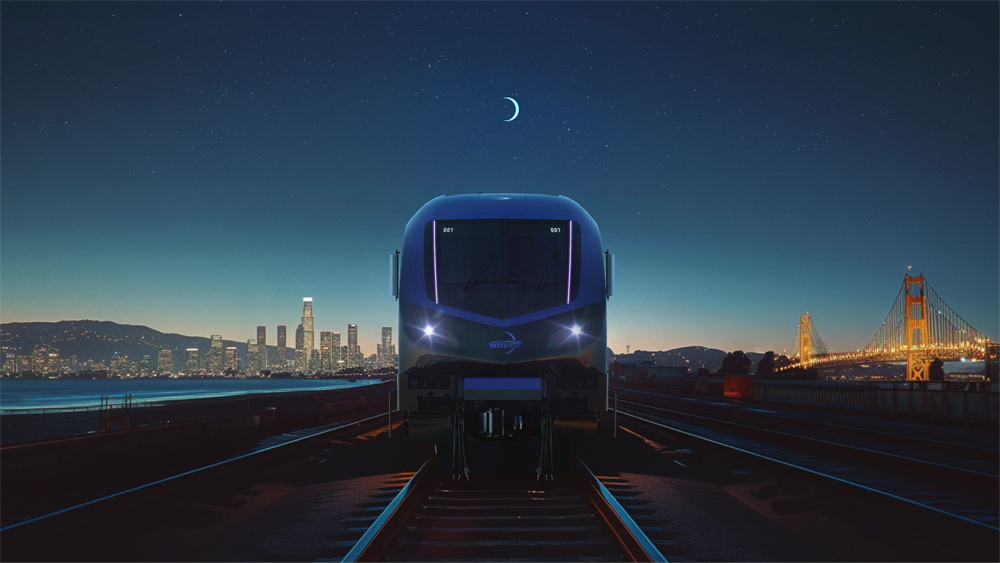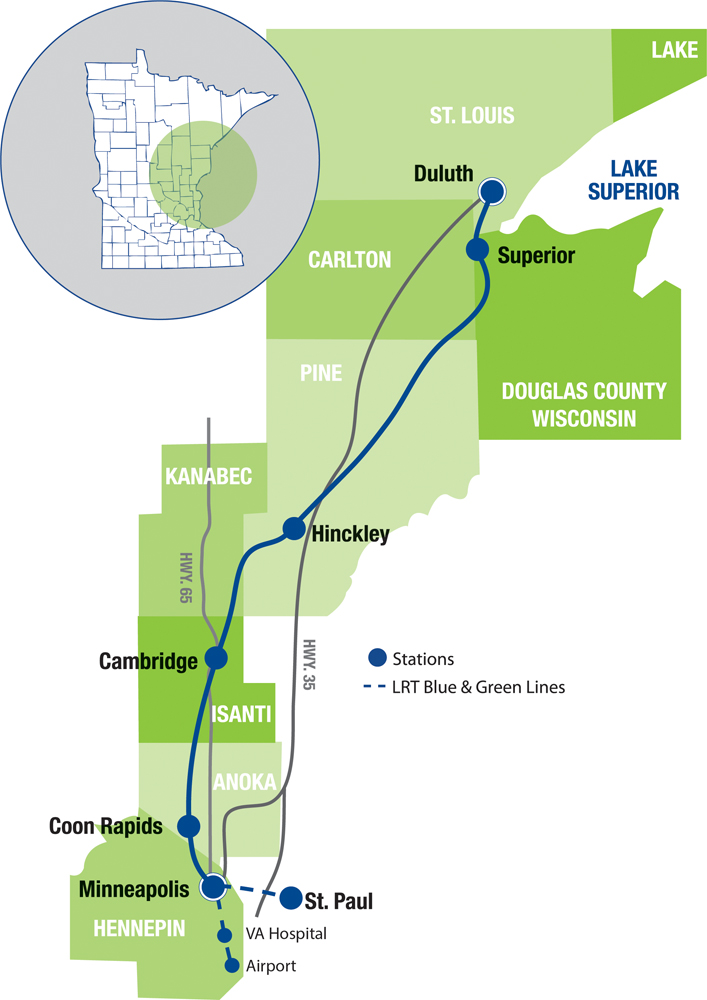Second-generation diesel modelers looking for a heavy-duty six-axle road engine would do well to take a look at Athearn’s new Electro-Motive Division SD40. The model has prototype-specific details, wire grab irons, see-through fan grills, and other features usually found on higher-end models. This version is detailed specifically for the Southern Pacific; we reviewed a version detailed for the Chicago, Burlington & Quincy in the March 2016 Model Railroader.
The Ready-To-Roll SD40 includes an RTR Sound Digital Command Control decoder made for Athearn by SoundTraxx. While it shares some features with that manufacturer’s other decoders, it’s not a Tsunami or Econami.
History. When EMD came out with the SD40 in 1966, many railroads initially shied away from the 3,000-hp diesel in favor of the higher horsepower SD45. However, they soon warmed to the easier maintenance of the SD40’s 16-cylinder 645E3 engine compared to the SD45’s 20-cylinder engine. Almost 1,200 of the six-axle diesels were sold in the United States and Canada, 62 in Mexico, and 10 more for the export market.
Though the other locomotives in the series are true SD40s, the Southern Pacific models like our sample are technically SD40Rs – rebuilt (SP said “upgraded”) under the General Rehabilitation and Improvement Program, or GRIP, which started in 1977. The SD40R can be spotted primarily by the battery box doors on the cab sides; GRIP-rebuilt locomotives have three doors, with two sets of four louvers on the forward door. Athearn’s SP models have this feature.
First look. Our sample model is painted in the Southern Pacific’s scarlet-and-gray “bloody nose” scheme. The paint is smooth and even, with crisp separation between colors. The white “Southern Pacific” lettering on the sides is straight and opaque, with voids where it crosses panel lines on only one side. The smallest lettering is legible under magnification.
All the dimensions I checked on the model match those in drawings published in S Gaugian magazine (Sept. 1989) and Railroad Model Craftsman (Jan. 1967). The paint scheme and placement of details matched prototype photos I found online, with one exception. Prototype photos showed the locomotive’s home shop and rebuild date painted under the road number on the cab; this was missing on our model.
The blackened-metal RP-25-contour wheels are all in gauge, and the plastic McHenry knuckle couplers are mounted at the correct height.
Though the model’s abundance of fine details is impressive, many of them proved rather fragile. Handrails easily dislodged with handling, cab window sun shades broke off, and so did the long hood’s dummy safety light. A few drops of cyanoacrylate adhesive secured all the errant details.
Performance. After removing both couplers, the shell easily lifted off. The model has the same mechanism as the RTR SD40 reviewed in the March 2016 issue.
I first tested the locomotive under direct current. The sound began to stutter as I increased the track voltage, before turning on steady at 7V. (This is common with DCC sound decoders, as the sudden surge of current caused by the sounds kicking in can drop the voltage below the starting threshold.) Once started, the sound of a turbocharged 645 prime mover filled the air.
The engine responded well at low speeds, starting to creep along at just over 7V. At 12V, the locomotive reached a top speed of 63 scale mph. This is similar to the top speed of one of the low gear ratios available on the prototype.
The prime mover sounds increased in RPM automatically as I increased the throttle. The bell sounded whenever the locomotive was moving at slow speeds.
I could trigger a grade-crossing horn signal (long-long-short-long) by rapidly increasing, then decreasing, the throttle.
Performance was smooth under DCC, as shown in the charts above. Switching to 128 speed steps lowered step 1 to just 1.5 scale mph.
Under DCC, I also had direct control of the sound effects. Function key 1 toggled the bell, while F2 and F3 played long and short horn blasts. F8 mutes all sound effects. The Gyralites were triggered by F5. The red safety lights on front and rear are non-functioning.
Unlike a Tsunami, the RTR Sound decoder doesn’t include brake or dynamic brake effects. However, I could still set up manual notiching to increase or decrease RPM sounds independently of the throttle setting.
At almost a pound in weight, the locomotive exhibited a lot of pulling power. According to our force meter, the engine had 3.5 ounces of drawbar pull, enough to pull 49 free-rolling 40-foot boxcars on straight and level track. In a real-world test on our Milwaukee, Racine & Troy layout, the SD40 muscled nine loaded coal gondolas up a curving 3 percent grade without slipping.
I also ran the engine forward and back through the 19″ curves and no. 5 turnouts of our Eagle Mountain project layout. It handled both easily. Athearn says the locomotive will take 18″ curves, but recommends a 22″ minimum for better performance and appearance.
Filling a niche. While most model train manufacturers focus on the more plentiful SD40-2, Athearn’s SD40R (and SD40) fills a significant gap in the market. Espee fans who model the 1980s and 1990s have needed this locomotive, and now, they can have it with DCC and sound.
Price: $184.98 (Digital Command Control and sound), $134.98 (direct current)
Manufacturer
Athearn Trains
1600 Forbes Way Suite 120
Long Beach, CA 90810
www.athearn.com
Era: 1966 to early 2000s (SP models, 1977 to 1998)
Road names: Southern Pacific (“bloody nose” scheme); Atchison, Topeka & Santa Fe (blue-and-yellow freight warbonnet); Burlington Northern; Conrail; and Montana Rail Link (large “W” or “meatball” herald, two road numbers each). Four road numbers each unless noted; also available undecorated.
Features
▪▪All-wheel drive and electrical pickup
▪▪Blackened metal RP-25 contour wheels, in gauge
▪▪DCC decoder socket (DC version)
▪▪Five-pole skew-wound motor with dual flywheels
▪▪Flexible Celcon handrails
▪▪McHenry knuckle couplers mounted at correct height
▪▪Minimum radius: 18″ (22″ recommended by manufacturer)
▪▪Prototype-specific details
▪▪RTR Sound by SoundTraxx (DCC version)
▪▪See-through fan grills
▪▪User-applied fuel tank details
▪▪Weight: 15.2 ounces
▪▪Wire grab irons





